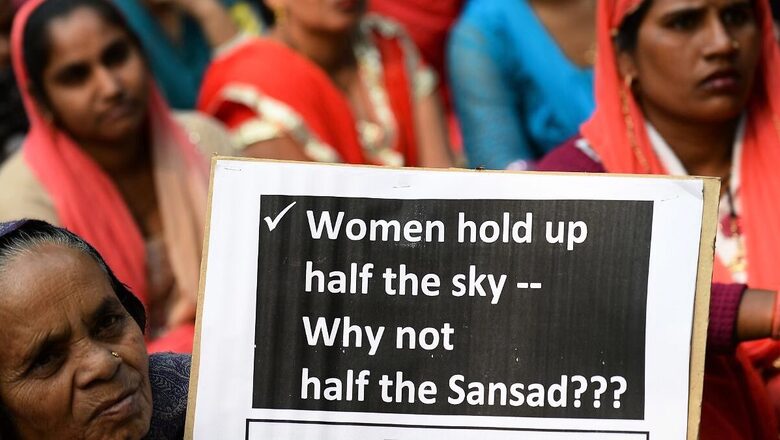
views
The reservation demand can be traced back to 1931. Post-Independence, the talks were recurring but no concrete steps were taken except in 1992 when the 73rd Constitutional Amendment allowed a minimum of 33 per cent reservation for women in local bodies. Political parties have made promises regarding this but if numbers are to be believed, empowerment of women in Indian politics has just been lip service.
If the 33 per cent reservation Bill had been passed, the total women in the Lok Sabha would have been 179. But in the current Lok Sabha, there are just 78 women MPs, which is 15 per cent. And this is the best that the Lok Sabha has seen since 1951, as per data from the Election Commission of India (ECI).
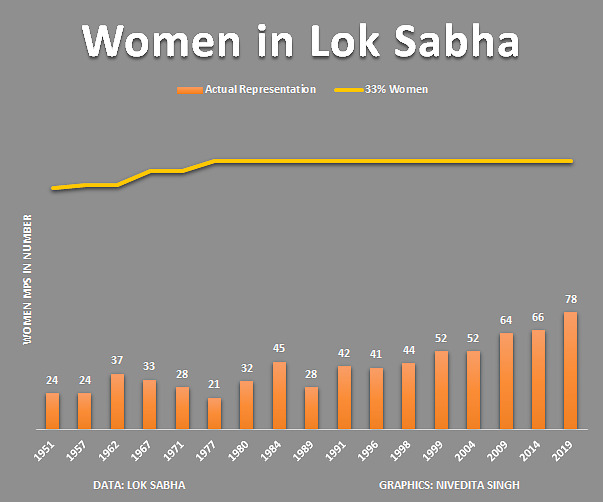
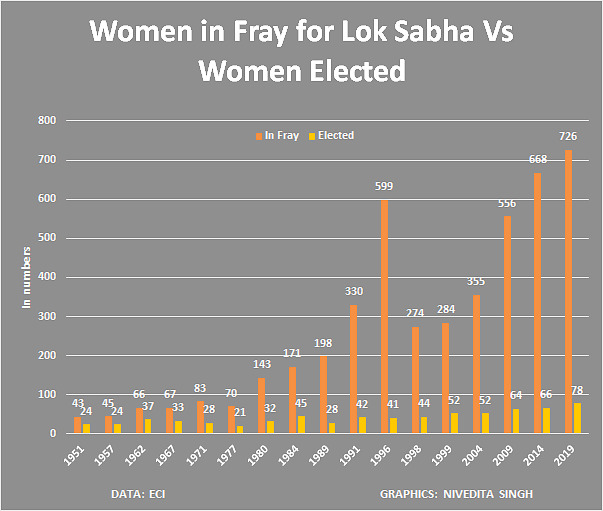
While the representation of women in Lok Sabha is not even close to the demand of one-third, the numbers analysed by News18 shows it has improved over the years.
Since 1951, the number of elected female MPs has gone up by more than three times. On the other hand, the number of women in the fray has gone up by about 17 times.
However, the number of women winning Lok Sabha polls in proportion to those in the fray has dropped drastically. In 1951, there were 43 women contenders for Lok Sabha polls and 24 made it to the House – 55 per cent. Cut to 2019, while the number of women in the fray has reached 726, those elected were just 78 — hardly 10 per cent.
Compared to men, the number of women elected and in the fray is a dismal figure. Since 1951, at least 88,476 men have contested the general elections while the number of women is just 4,678.
The numbers analysed also show that the total women candidates who fought Lok Sabha polls between 1951 and 2019 is much less than the male candidates in the fray in each poll since 2004. In 2004, there were more than 5,000 men in the fray while in 2009 and 2014, their number was more than 7,500. In 2019, there were 7,322 men in the fight for the general election.

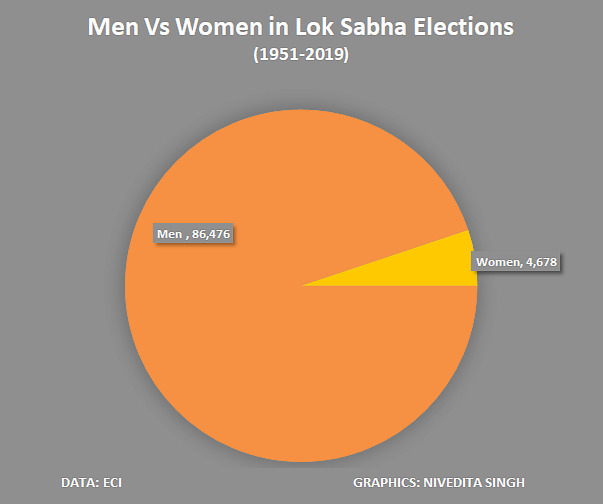
At the time of the first Lok Sabha, the share of women in the House was less than five per cent. In the next 68 years, in 2019, it reached about 15 per cent. For women representation to reach 33 per cent in Lok Sabha, it would take another 50 years, if not more.
Political parties across the spectrum have been promising reservation for women in their manifestos, be it Congress (2009, 2014 and 2019), BJP (2014 and 2019) or the CPI-M (1999, 2009 and 2019).
A number of times the Bill has made it to the House but could not get a nod. It was first introduced in 1996 and later in 2010 when it was also presented but lapsed later.
Women representation in assemblies across India is also below 15 per cent, with Tripura — which has nine MLAs out of 60 — having the highest women representation. On the other end of the spectrum is Mizoram that has no women and Himachal Pradesh where the representation is 1.5 per cent. When considering the number of women elected in the last assembly elections of the respective states, only 11 assemblies have more than 10 per cent women representation out of 31 assemblies.
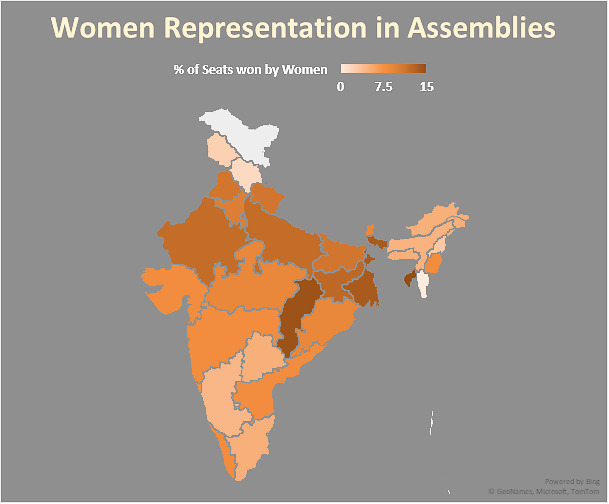
WHY THE LOW REPRESENTATION?
Many factors are responsible for the low representation of women, starting with general roles assigned to them. Further, traditional division of labour, lack of education and economic barriers along with social structure play a crucial role.
In the recently concluded Monsoon Session, the Centre informed Parliament that gender justice is an important commitment.
“The issue involved needs careful consideration on the basis of the consensus among all political parties before a Bill for amendment in the Constitution is brought before Parliament,” they said.
GRIM PICTURE WORLDWIDE
According to the United Nations, women’s equal participation and leadership in all spheres of life is essential to meet the challenges of the twenty-first century. Women and girls represent half of the global population, yet, they continue to be underrepresented in leadership positions in every region of the world.
As of November 2018, only 10 per cent of UN member states had a female head of state or government. Globally, only 24 per cent of parliamentarians are women. In 31 states, women account for less than 10 per cent of parliamentarians in single or lower houses, including four chambers with no women at all.




















Comments
0 comment